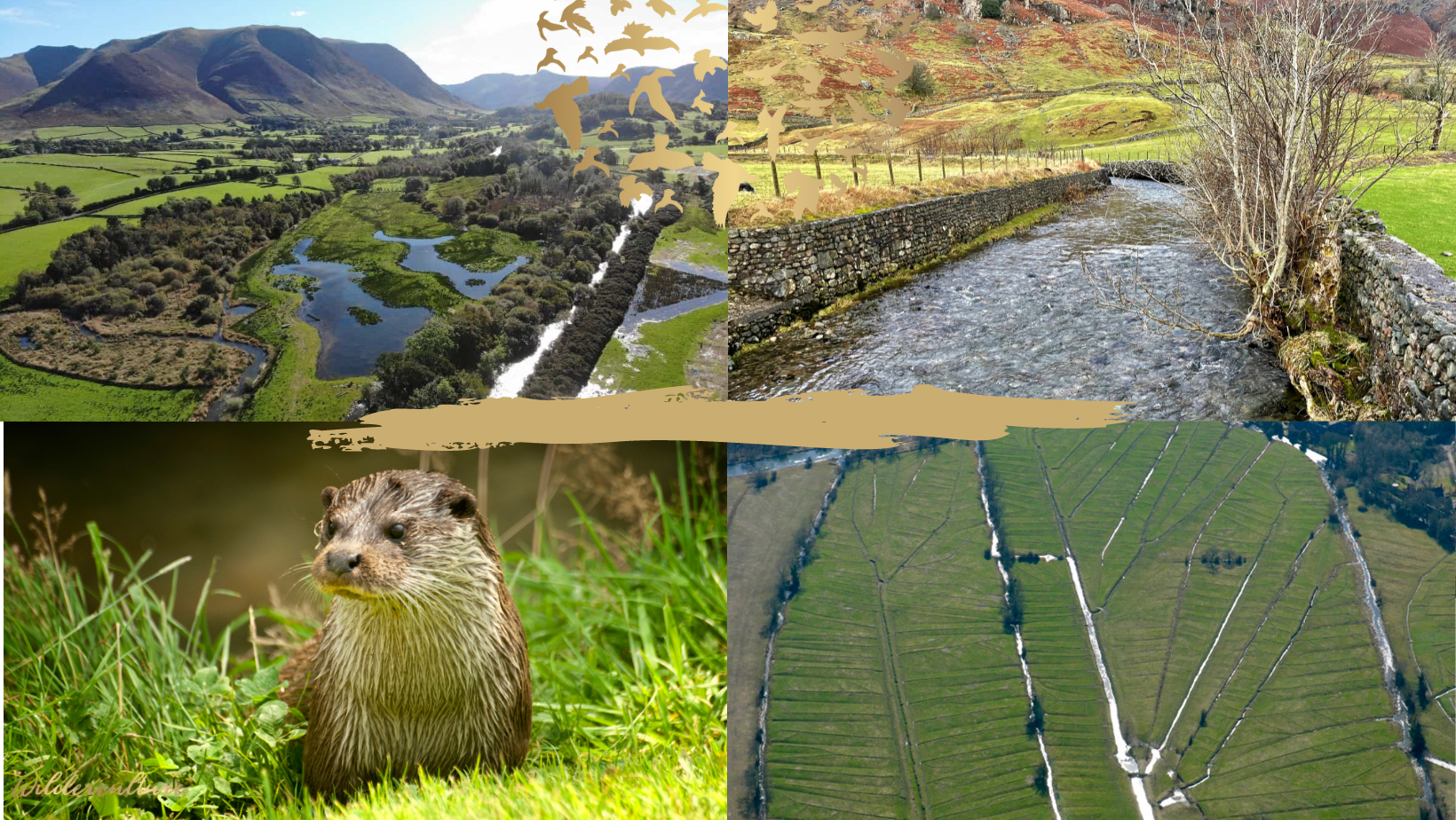
River Restoration helps Livestock Health
River Restoration helps Livestock Health
River Restoration for the British Uplands.
By Georgia Wingfield-Hayes
Rivers in the British uplands like most rivers are beautiful and endearing, however on closer inspection you start to realise that many are far from natural. You might notice, for example, that the land on the opposite side of a valley to the river, is in fact lower. You get to wondering why the river isn’t over there. Well the answer is that it probably once was.
Rivers in upland areas were historically embanked during the industrial revolution, in order to drain floodplains for agriculture. While this has provided the landscape with tidy, dryer fields for grazing animals, it has been bad news for aquatic life and all the species upon which that life depends. It has also had an adverse effect on the land’s ability to hold water which, if optimised, would help prevent drought on the farmland, and flooding downstream.
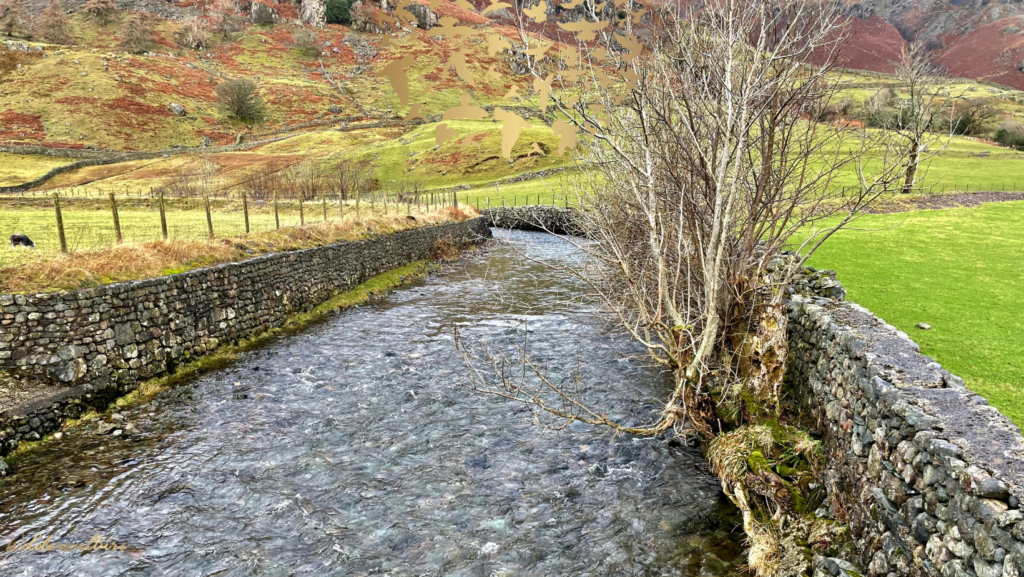
A canalised portion of Langdale Beck in the Lake District
What is River Restoration
River restoration is the allowing of a river, back to its natural course and behaviour. This means earthworks to undo embankments and to help the river find its original path. River’s, left to their own devices, meander and spread out into flood meadows, creating gravel banks, ponds and wetland areas. This creates different habitats for all sorts of trees, plants and wildlife, from frogs and dragonflies, to kingfishers and otters. Gravel banks, for example, are essential for spawning fish. On Swindale Beck in RSPB Haweswater, only months after river restoration work was carried out, they found evidence of salmon spawning in the gravel.
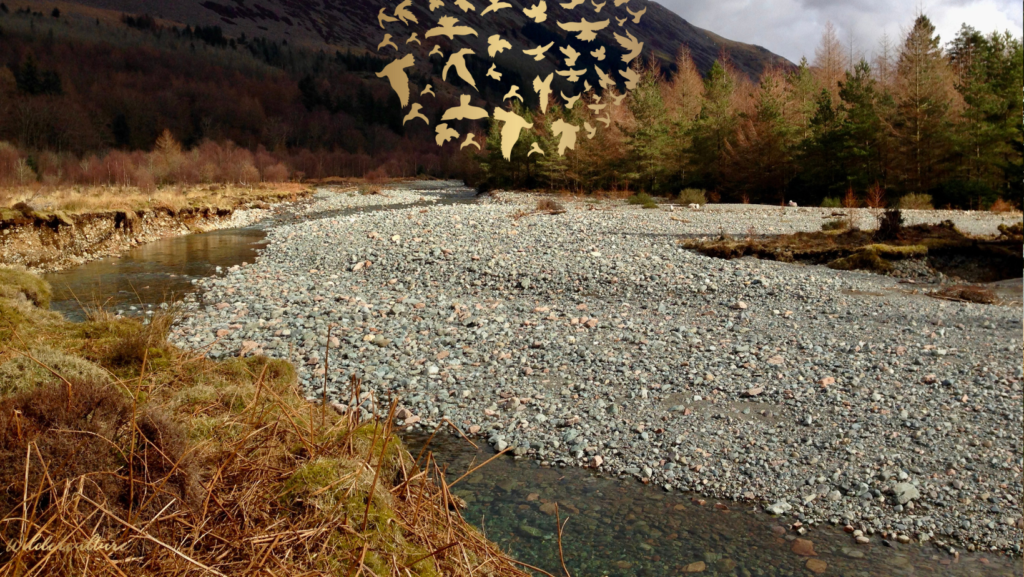
The unconstrained River Liza in the Ennerdale Valley
Swindale Beck (see video below) is a great example of full river restoration, but it is also possible to carry out partial works, as at Low House Farm, a Wilderculture project in Longsleddale, Cumbria. Here just one side of the river has had part of the embankment removed in order to allow the river, when high, to flood out, creating wetland areas and ponds.
A Controversial Topic
Landowners and farmers are, in general, against river restoration. In the uplands, river valleys are where we find the highest quality grazing and the hay meadows. In the Lake District this land is limited to narrow, valley bottoms.
Then there is the very real danger of farmland flooding and livestock being lost to the flood waters. This occurs in big flood events where the river breaks bank and the animals either don’t know where to go to escape or can’t escape due to fencing.
Embanked rivers, by their nature, flow much faster than a natural river, this is because the channels are straight and nothing impedes the water. This makes flood events sudden and often unexpected to livestock. Farmers often fear the idea of river restoration because of the possibility of losing livestock to floods. But in reality the risks are no different, and if river restoration is done throughout a valley, flood events would be more gradual and less severe.
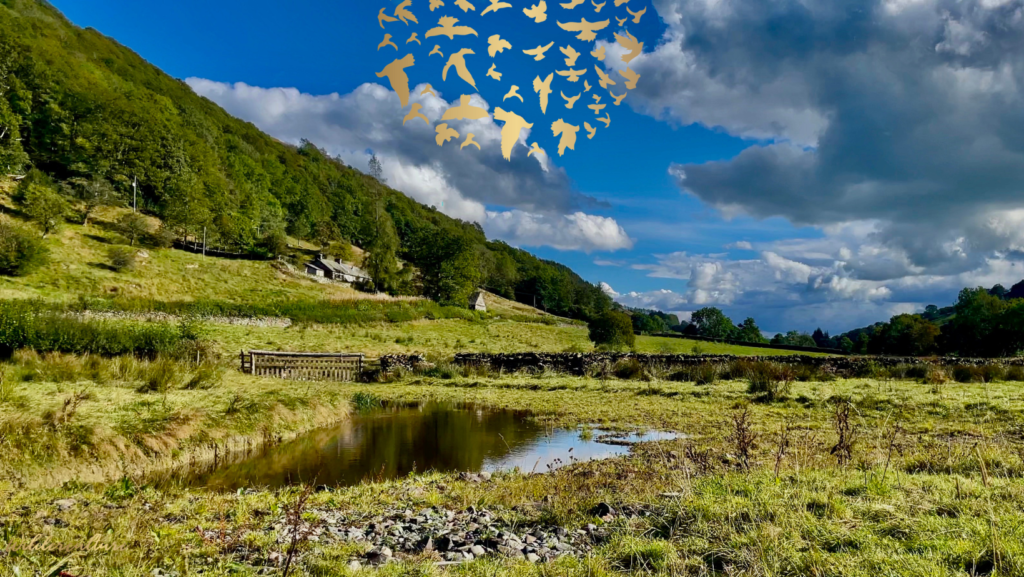
The partial restored River Sprint at Low House Farm in Longsleddale, a Wilderculture Project
In Cumbria, 83% of the rivers have been seriously modified and less than 1% of what would be natural floodplain, can be classified as a functional wetland habitat. In terms of both biodiversity and flood prevention this is a serious problem.
Water Meadows – Inspiration from the Old Way
Although less common in the north of Britain, water meadows were once a vital feature of our landscape. I feel they are worth examining, not just for their ecological value, but in the context of regenerative farming and the increase in extreme weather events.
Before the industrial revolution and the advent of tractors and other farm machinery, oxen and horses were vital to the functioning of a farm. This meant there were extra mouths to feed alongside livestock, during the winter months. The hungry gap at the end of winter and start of spring, being the most difficult time.
Water meadows in this context were a highly prized resource. Flooding was used as a way to raise the temperature of the soil in early spring, so that the grass started to grow weeks ahead of other land. During summer, controlled flooding kept land damp and more productive for the hay harvest.
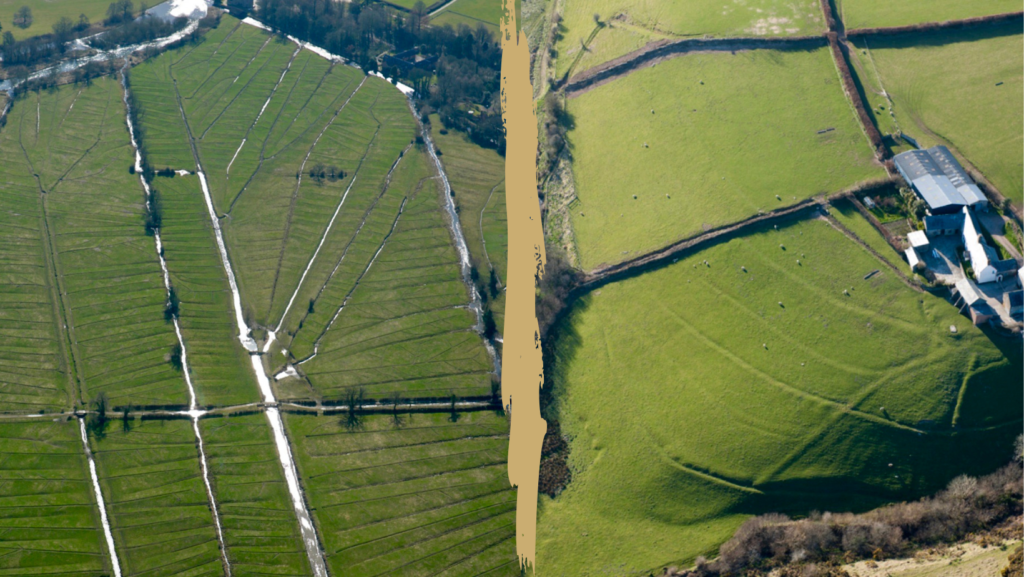
Examples of bedwork and catchwork water meadows. Learn more with Historic England’s Water Meadows – An Introduction to Heritage Assets (see references)
Water meadows became increasingly complex in design. Originally farmers simply took advantage of the natural flooding along rivers, the silt deposits made these the most fertile lands on any farm. Over time however, highly sophisticated controlled flood systems were created, the canalisation of rivers being part of that process.
Water meadows, from bedwork systems to catchwork systems, were carefully engineered, but what grew up around and within them was a complex and biodiverse ecosystem. The water was always kept moving, so the conditions in the soil were never allowed to become anaerobic. Silt deposits naturally increased phosphorus levels, and flooding reduced the numbers of mice, voles and grubs.
Wild Rivers promote Livestock Health
Worm burdens are a serious problem in livestock and are a good reason for feeding livestock on a far more varied diet. According to Claire Whittle, a regenerative vet, chicory for example, will reduce the worm burden of animals by 40%. Claire is advising the team at Milton of Tulliemet. On a recent call with Claire we learned of an experiment carried out by Nottingham University, where sheep were split into two groups, one being given a cobalt drench and the other being fed willow. The results showed that the only group to see an increase in blood cobalt levels were the sheep who’d been fed on willow. Low cobalt is linked to a high worm burden.
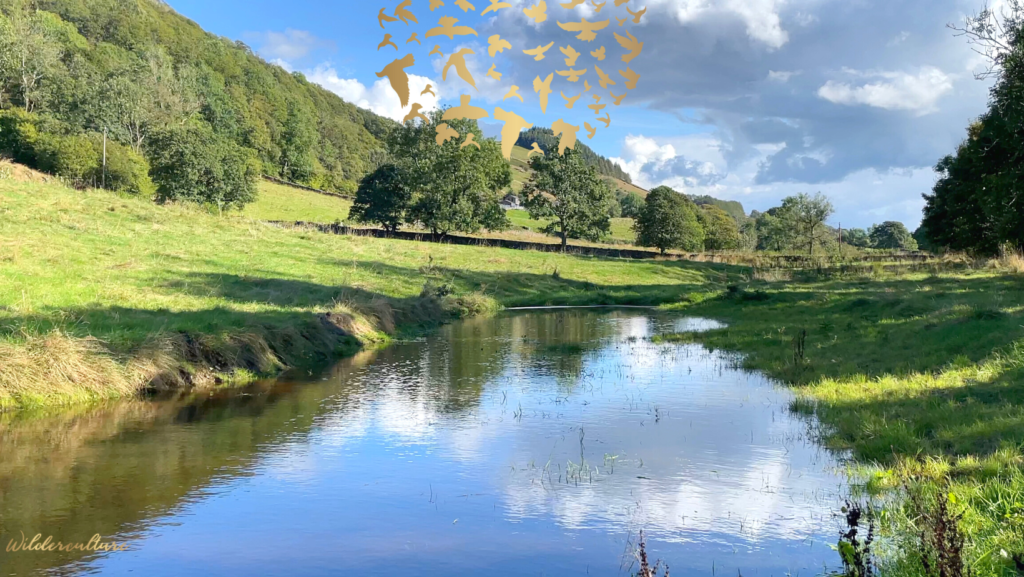
River restoration at Low House Farm, Longsleddale.
This got me thinking about the link to river restoration. Willow grows abundantly in riparian areas and will be favoured by sheep when it buds in the spring, right when they need a cobalt boost the most.
The connections between certain trees and plants, and animal health is endlessly complex and little understood. Animals given a wide variety of forage will self medicate for parasites and diseases that they would otherwise be helpless to fight off.
Claire also told us about ‘hospital fields’ which existed on all farms in the Welsh countryside around where she lives. These fields were found close to the house, and reserved for animals that were not well. These were the most species rich fields and acted like a natural pharmacy, for the animals to forage and get well from.
Diverse river habitats will also act to aid in the control of parasites, by increasing predator pressure. Liver fluke, for example, who’s intermediary host the dwarf pond snail, lives happily in rank grassland. Frogs, toads, fish and birds such as ducks and geese all eat snails, but they struggle to live in fast flowing canalised rivers, with high stone banks. They need calm river fringes and natural ponds in which to thrive.
Herd intelligence – Animals that know how to avoid a flood.
I once had the fortune to be part of a wood-pasture study trip to Holland. One of the places we visited was Millingerwaard on the River Waal right near the border with Germany. This rewilding project has Konik horses and Galloway cattle that are not designated as ‘wild,’ but have a dispensation for minimal intervention. So the cattle are gathered only once a year for a health check, ear tagging and to take hair samples from young to track paternity. Some cattle are also taken each year to be sold into the human food chain.
The River Waal is a main tributary of the River Rhine, and Millingerwaard comprises a complex landscape of banks and floodplains. Large scale floods are not uncommon and the cattle know exactly how and when to vacate the floodplain, to keep safe from the rising waters.
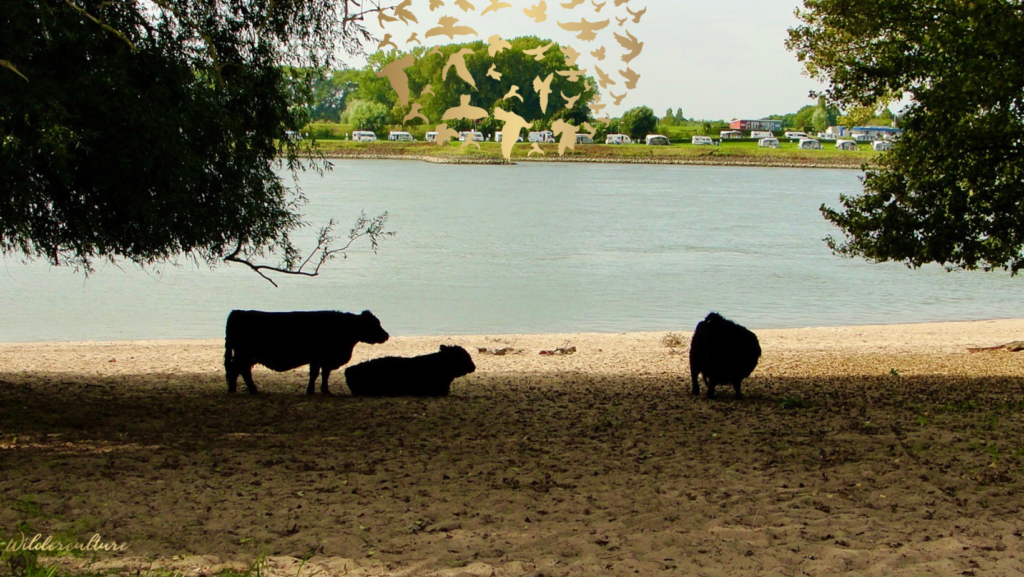
Galloway Cattle on the beach of the River Waal
I was fascinated to learn that the managers here never remove the matriarch from the Galloway herd, because she is the one who leads the herd to safety and passes this knowledge down to the next in line.
River Restoration for the 21st Century
Bringing all of these ideas and perspectives together, at Wilderculture we feel it is really worth landowners considering river restoration. No less because the government grants available are substantial. River restoration can be done with minimal disruption to farming activities and bring benefits to the farmed environment.
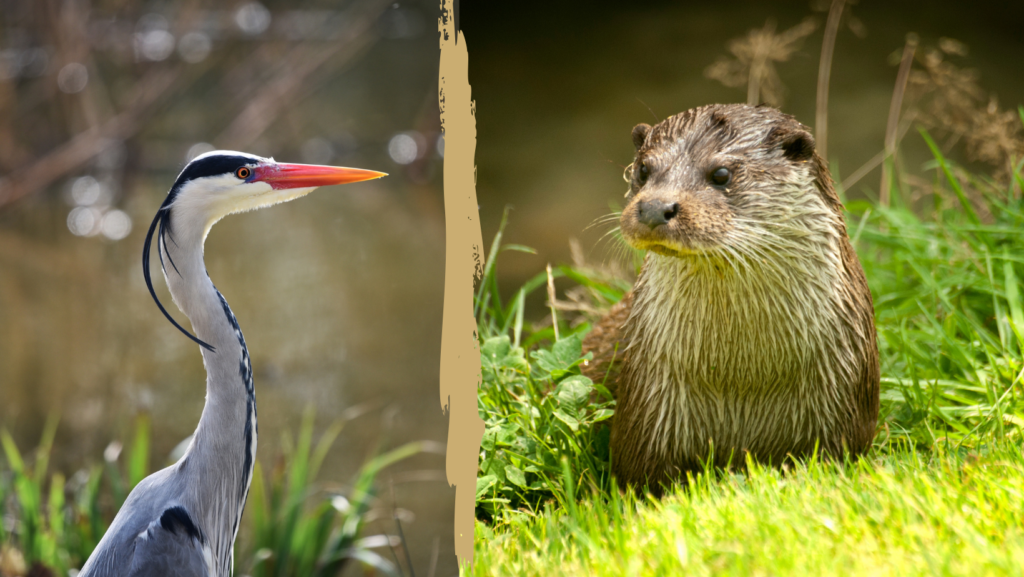
Grey Heron and Otter – some of the wildlife river restoration encourages.
Wilderculture works with landowners to foster a mosaic of habitats throughout the farm, so that livestock have access to the greatest diversity of trees and plants possible, to optimise animal health and immunity. Riparian areas add yet another dimension to this diversity.
When we allow the land to express its innate complexity and animals to express their innate intelligence we can create farming systems far less dependent on medical and other intervention, while enjoying the burgeoning wildlife.
Finally, river restoration in the uplands might become essential to farming, if droughts like the summer of 2022 become commonplace. Water meadows were engineered with this intention in mind and we can find inspiration from this rich history in order to create farming ecosystems that are resilient and fit for this 22 century.
References
Cumbria River Restoration Partnership Programme – European Riverprize winners 2022
http://www.youtube.com/watch?app=desktop&v=eVt8sYCkPFU
Lowther river restoration
https://lowthercastle.org/wilding/rivers/
Swindale Beck Restoration
https://www.youtube.com/watch?v=DtfayvpgZLs&t=2s
What is River Restoration
https://www.ecrr.org/River-Restoration/What-is-river-restoration
Meadowlands in time: Re-envisioning the lost meadows of the Rother valley, West Sussex, UK. Alastair W. Pearson1 and Philip J. Soar2
Water Meadows as European Agricultural Heritage
https://link.springer.com/chapter/10.1007/978-3-030-00268-8_6
Water meadows and watery meadows by David Beeson
https://nwhwildlife.org/2019/10/29/water-meadows/
The River Restoration Centre – Esmée Fairbank Foundation https://www.therrc.co.uk/sites/default/files/general/Training/esmee/what_is_river_restoration_final.pdf
Historic England. Water Meadows. An Introduction to Heritage Assets
https://historicengland.org.uk/images-books/publications/iha-water-meadows/heag237-water-meadows/


No Comments